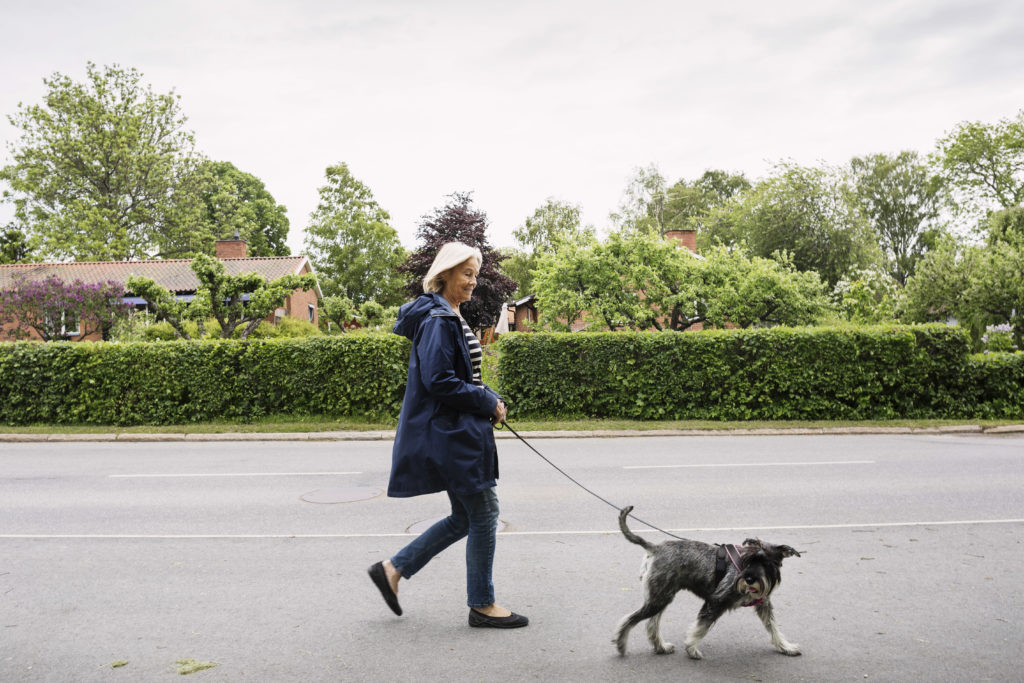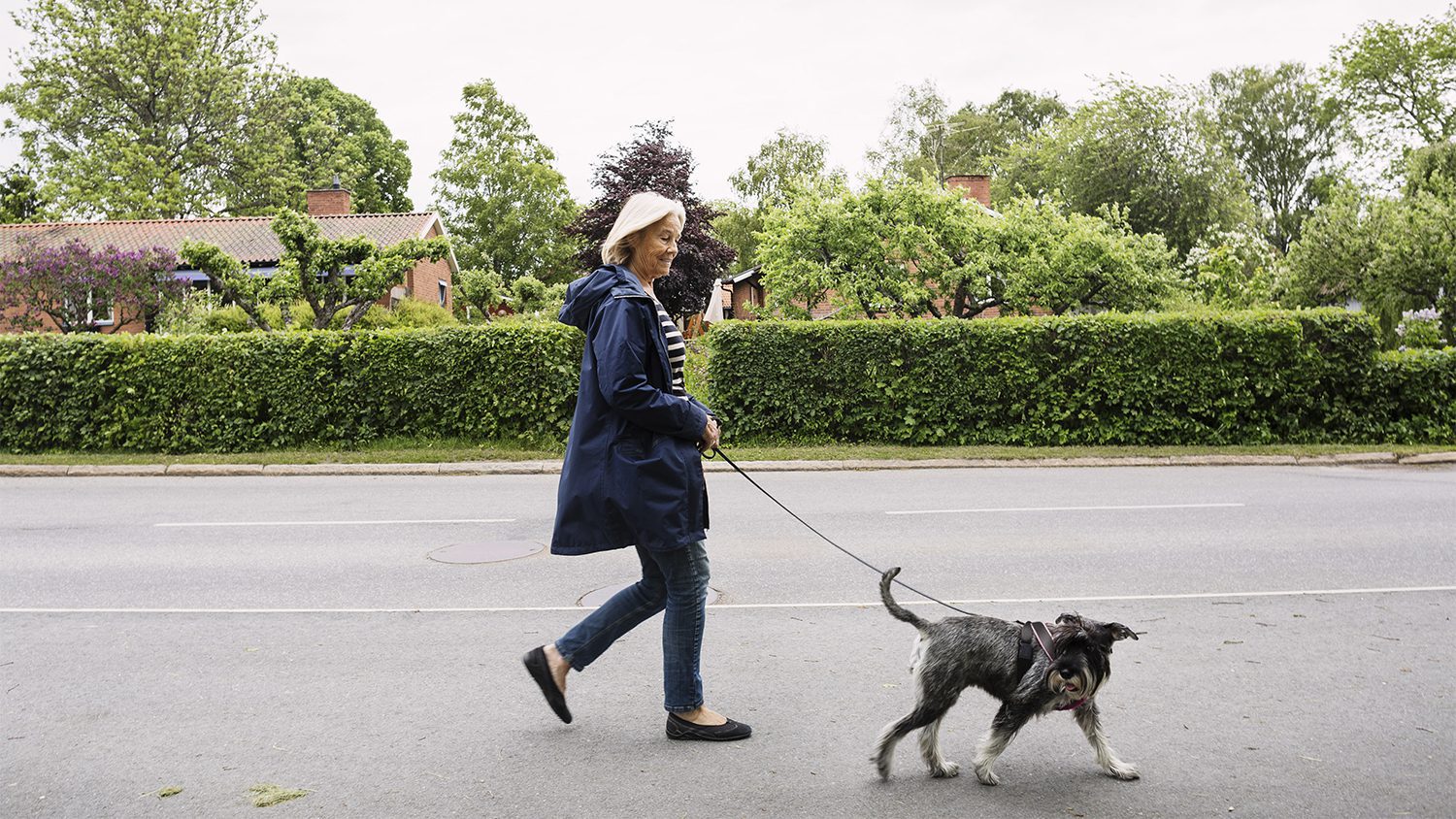
Our friends at Florida Blue Medicare have put together these helpful tips for incorporating a daily walk in your life .
As our bodies age, it often becomes harder not only to start exercising, but also to keep exercising. Exercising and staying active play important roles in keeping us healthy and on the go.
In fact, a University of Florida study showed that adults over 70 who walked just a quarter of a mile a day were more likely to stay mobile than their peers who did not exercise.
While even a small amount of exercise is better than no exercise, adults over 65 should aim to get about 150 minutes of endurance activity every week, according to the Centers for Disease Control and Prevention. This can include walking, swimming, cycling or doing a little bit of each. You should also include daily exercises that improve strength, balance and flexibility. There are four types of exercise you should focus on:
Endurance: Also known as aerobic exercise, endurance exercises increase your heart rate and breathing. These exercises improve the health of your heart, lungs and circulatory system. They also help prevent diseases such as diabetes, heart disease and osteoporosis.
Strength: To build strength in your muscles, you will need to lift or push weight. Having stronger muscles can help you with everyday activities, such as getting up from a chair, opening a jar or playing with your grandkids. Having lower-body strength also will help improve your balance.
Balance: According to the National Institute on Aging, more than one in three adults over 65 falls each year. Balance exercises can help stop falls or slips and prevent the injuries that may result from them.
Flexibility: Stretching exercises can give you more freedom of movement when doing other physical activities. They also help you when doing daily tasks, such as getting dressed and reaching for objects.
Another great way to stay active is trying out the SilverSneakers program. This program is available at no cost to you through your BlueMedicare health plan. SilverSneakers gives you access to 14,000 fitness centers and wellness programs across the United States. Find a SilverSneakers location near you to get started on reaching your exercise goals. For more information, check out our blog on SilverSneakers.
If you have a hard time keeping track of your exercise schedule and progress, take a look at these helpful apps (Note: These apps are free, but may have in-app purchases you can make):
- MyFitnessPal: MyFitnessPal is a free calorie and exercise tracker. You can track what you eat and what kind of exercises you are doing. The app will tell you if your diet and exercise plan is healthy for your age, level of activity and goals you are trying to reach.
- Johnson and Johnson 7-Minute Workout: This app gives you a full workout in seven minutes. There are over 70 workouts that can be personalized to your motivation and activity level. You can follow along with a trainer from the comfort of your home. The app makes staying on track easy.
- Map My Walk: Map My Walk shows you popular walking routes based on your location. This app will show you how far and fast you walk. It also shows how many steps you have taken and how many calories you have burned. Just select your city and get walking!
- Lose It!: This app focuses on tracking your nutrition. All you have to do is set a goal then track your food and exercise. The app lets you track foods by searching it in their database, scanning the products barcode or taking a picture of the food. The app also includes a community page for inspiration and support.
- If you have a smartphone, smartwatch or tablet you can use the built-in health app to track your daily activity.
Caregiver note: If you are a caregiver for an older adult, you can encourage your loved one to get more physical activity by being their exercise buddy. After all, exercise is good for you, too! Try out some of the above exercises together. Find out what kind of activities interest you both and make a plan to do them together. Maybe it’s gardening, taking short walks or doing a beginner exercise class together. Whatever gets you both moving, try it out!
Remember that everyone sets their own goals and will have different limits to what they can do. If you haven’t worked out in a while, it’s always good to consult with your doctor to know of any recommendations they may have. Don’t worry about starting out slow. Try working out for shorter amounts of time, using less weight and doing less repetitions of your exercise. Consistency is the most important factor. You should try to exercise at least three days a week. You don’t need to do the same workout or activity every time, just doing any activity is what’s most important. Keep setting new goals for yourself and improving your health!
Sources:














